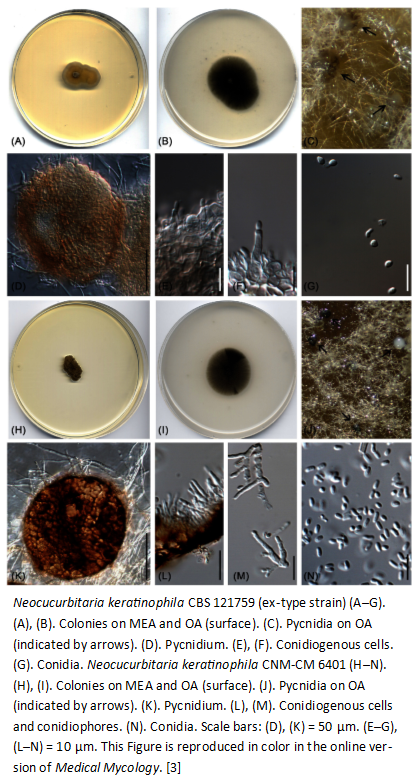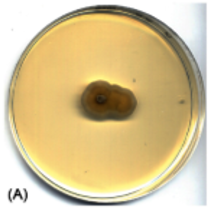SUMMARY: In a recent study on coelomycetous fungi from clinical origin, Dr Garcia-Hermoso and colleagues identified eight Neocucurbitaria keratinophila isolates from superficial mycosis cases in Spain.
In a recent paper on coelomycetous fungi from clinical origin, Dr Garcia-Hermoso and colleagues identified eight N. keratinophila isolates from superficial mycosis cases in Spain. Prior to this, N. keratinophila had only ever been reported from one other human clinical case, also in Spain.
In a further study on these isolates, Dr Valenzuela-Lopez and colleagues used culture/microscopy (see image below) and molecular techniques to characterise the isolates. They were also tested against nine antifungal drugs, all of which showed good activity against the fungus, with isavuconazole being the least effective.
The eight isolates studied could not be proven as the agents of infection; however, the authors note that their isolation from human superficial specimens reinforces the clinical importance of N. keratinophila as a potential emergent opportunistic infection. As all isolates have been from Spanish clinical specimens, further work is needed to establish whether the geographical distribution is as limited as has been found so far.
Read the papers:
- Garcia-Hermoso et al (in press) Diversity of coelomycetous fungi in human infections: a 10-year experience of two European reference centres. Fungal Biology
- Ferrer et al (2009) New Pyrenochaeta Species Causing Keratitis, J Clin Microbiol. 47(5) 1596-1598
- Valenzuela-Lopez et al (2018) Neocucurbitaria keratinophila: An emerging opportunistic fungus causing superficial mycosis in Spain, Medical Mycology,


